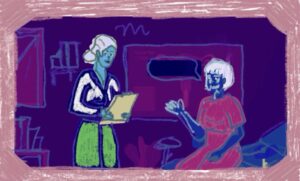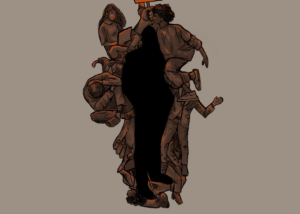Next Monday, the Office of Residential Living will release application materials for upperclassmen interested in living in the refurbished Ryan and Mulledy Halls during the 2015-2016 academic year. The entirety of the newly-transformed Jesuit residences, which are expected to be one of the most coveted upperclassmen housing locations, will become the “Spirit of Georgetown Residential Academy,” the university’s newest Living Learning Community.
Living Learning Communities offer valuable support for certain students who may not find for themselves a home to which they belong in ordinary residence halls. Although upperclassmen generally rely less on their residence space to provide a sense of community than do freshmen, Living Learning Communities have seen success in the past.
Students who apply for the Living Well LLC, for example, seek a community that avoids alcohol, tobacco, and other drugs. Without Living Well, those who choose not to smoke or drink at parties could find themselves socially marginalized and would be left without a communal safe space for their lifestyle.
However, one of the reasons for Living Well’s success is its location in Kennedy Hall, which, as a traditional dorm with shared kitchen and lounge facilities, easily offers members a sense of closeness and community. In contrast, the entirety of Ryan and Mulledy Halls will have a combination of Nevils-style apartments and Copley-style suites. In apartments and suites, however, students are much isolated from each other and from their RAs, as they each have their own private spaces and have less incentive to establish connections with each other in community rooms. The layout of the renovated Ryan and Mulledy Halls may damage prospects for a thriving, tight-knit “Residential Academy.”
Furthermore, the “Residential Academy” lacks concrete and unique goals that fulfill a niche existing LLCs like Living Well are so successful at doing. According to a webpage on student living on campus, the university promises that future occupants “will have the unique opportunity to reflect on their time at Georgetown.” These incredibly vague statements echo the confused language about “Jesuit values” that the university now likes to insert in its every new initiative. The nine tenets of Georgetown’s spirit that its members, in fact, appear to have been lifted verbatim from the blue and gray banners that hang all campus. Plenty of other campus organizations and activities, too, would claim a searing passion for “Community in Diversity” or “Women and Men For Others.”
It is therefore difficult to imagine that this new LLC will truly help students “articulate a deep awareness of their formation as students while at Georgetown,” when students are already interacting with such values daily with their professors, friends, and chaplains. Many students may be drawn to Ryan and Mulledy not to explore Jesuit values, but simply because these halls will likely become one of this campus’ most desirable pieces of real estate.
Instead of creating a LLC for the sake of establishing what is at best a tenuous connection between Ryan and Mulledy Hall’s Jesuit history and its future residents, the university should reconsider why it chose to move ahead to convert those buildings into residence halls in the first place, and whether the university needs another LLC with abstract goals and a loosely-defined mission statement. Otherwise, the application will have little meaning, and students will get to receive rejection letters not just for jobs and clubs, but now for the place they sleep at night.




“Instead of creating a LLC for the sake of establishing what is at best a tenuous connection between Ryan and Mulledy Hall’s Jesuit history and its future residents, the university should reconsider why it chose to move ahead to convert those buildings into residence halls in the first place…”
Um, is that a joke? I think the reason why the University chose to convert those buildings into residence halls in the first place is pretty obvious – the 2010 Campus Plan, with its mandate that Georgetown house a certain % of students on campus by Fall 2015. Not sure what there is to reconsider here…